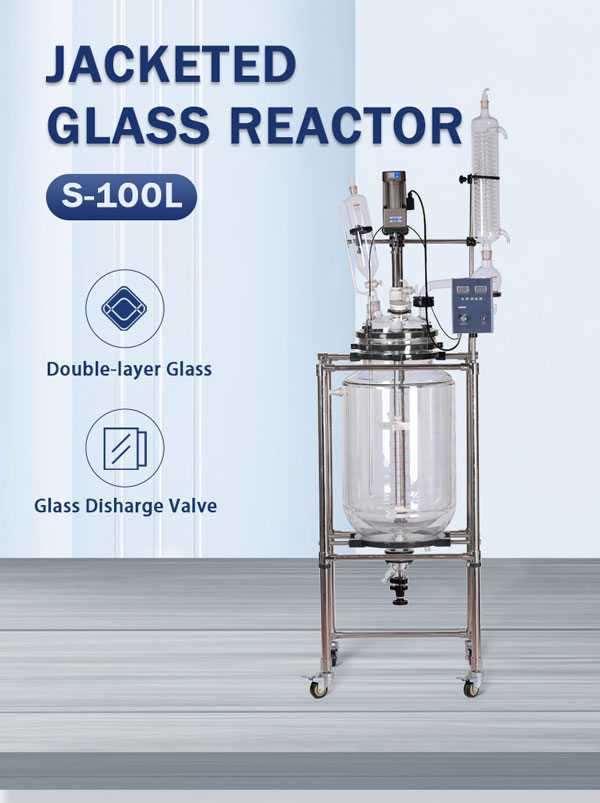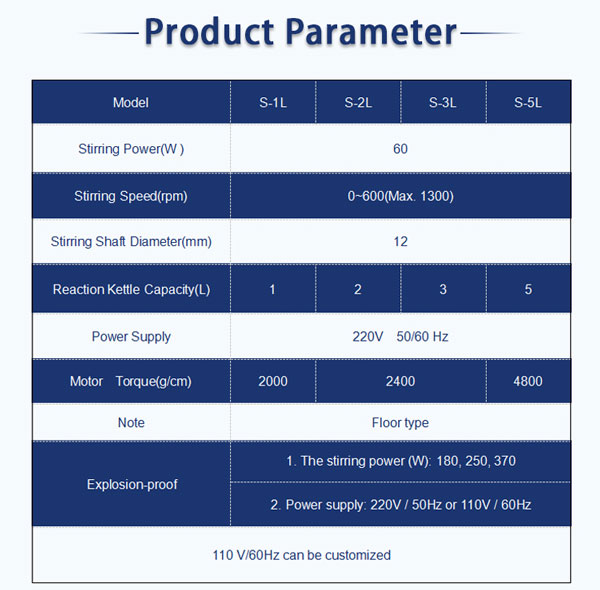ZZKD series jacketed glass reactor
What is glass reactor assembly?
100l reactor vessels are widely used in pharmaceutical production. They are inherently resistant to many usually corrosive components whose use avoids metal contamination and, in addition to their very own contaminants, affects the speed of chemical reactions. The reactor could be operated at atmospheric strain, elevated temperature or vacuum. In addition to chemical reactions, it can also be used as a mixer, heater, storage tank, crystallization tank and evaporator. In each case, the container is emptied via a flush valve on the bottom.
50l jacketed glass reactor have gotten more and more efficient for energetic pharmaceutical components (APIs), so Good Manufacturing Practice (GMP) necessities place increasingly more stringent requirements on valve design and sealing. No useless house, ease of cleaning and flushing are commonplace for valves, and cross-contamination have to be avoided in any respect prices. The sealing valve of the glass reaction vessel lags behind the valve sealing of the metal vessel.
Due to the manufacturing process of glass containers, the aperture tolerance is much larger. New valve sealing expertise for glass reaction vessels improves tightness and productivity.
Connecting the valve and probe to the response vessel means overcoming the wide tolerances encountered in port holes throughout glass vessel fabrication. Elastomeric rubber seals are well suited to this function because their flexibility overcomes the imperfections of glass reactor assembly to create an efficient seal.
30L glass reactor assembly produced by ZZKD jgr series jacketed glass reactor manufacturer. For maximum utility, tanks sometimes have a jacket to control temperature, together with inlet and outlet valves, in addition to numerous probes, injection ports, and vents.

Glass reactor construction:
Theglass reactor assembly includes the kettle body, the kettle cowl, the constant strain dropping funnel, the distillation elbow, the serpentine condenser, the thermometer shell, the inlet and outlet valve, the lower gas valve, the suction elbow, and the hole plug. High borosilicate glass is used. glass reactor assembly is a special glass material with low growth price, excessive temperature resistance, high power, high hardness, excessive light transmittance and high chemical stability. Due to its wonderful properties, the appliance of excessive glass reactor assembly also followed. wider
Support part, the support part of the jgr series jacketed glass reactor includes chrome steel heating bottom plate and brake casters; the support a part of the double-layer glass reactor includes stainless-steel tailstock and brake casters, and the stainless steel derrick is manufactured from 304 materials, which is used to assist the whole kettle physique. , which may defend the double-layered kettle physique; the brake casters are positioned at the 4 corners of the chrome steel water brake body, and the water brake body is made from rubber, which is wear-resistant. After the double-layer water bottle is placed, you probably can press the brake to repair the typhoon rack. Influence;
In the stirring half, the stirring blade is manufactured from Teflon materials, which performs a stirring position. It may be stirred by a stainless steel wrapped teflon stirring rod and a stirring motor related to it. The material could be fully stirred and combined (paddles can be personalized in accordance with needs)
The sealing half, the single-layer glass response kettle and the double-layer glass response kettle are all mechanical seals. The mechanical seal is located within the PTFE stirring plug of the stirring cover of the kettle cowl to make sure the sealing of the stirring rod during the stirring process. Stir and rotate, in order that there is no air leakage within the kettle physique to have an effect on the experiment.
Glass reactor set up:
1. Open the box and examine all parts.
2. Take out the stainless steel body and modify the support ring to the correct place.
3. Mount the jacketed flask on the stainless steel body. Adjust the support ring and tighten the screws.
4. Install the principle rod, condenser bracket and all connecting rods.
5. Install the motor and inverter.
6. Install the stir seal assembly on the glass cowl. Insert the stir stick and close the lid. Apply somewhat grease to the sealing floor to reduce glassware wear and guarantee high vacuum.
7. Install all glass components and apply silicone grease to the sealing surfaces.
8. Install the vent valve on the bottom of the jacketed flask.
9. Check all installation steps, when all changes are carried out, you probably can energy up the take a look at tools.

Glass reactor operation procedures:
1. Check the ability provide voltage to guarantee that it is in preserving with the tools specs.
2. Insert the plug into the facility socket, activate the inverter, and switch the knob to set the suitable speed.
3. After the stirring rod is put in, flip it by hand to check whether the concentricity is sweet. If not, regulate gradually from slow to quick.
4. If the sealing efficiency turns into weak, please examine the rotary bearing seal in the mixer.
5. Using GG17 excessive borosilicate glass, wonderful physical and chemical properties.
6. Move the stirring blade up and down by 5cm based on precise needs.
7. The circulation port on the outer side of the interlayer can use scorching oil for heating response and cooling liquid for low temperature reaction. If using steam heating, no extra than 0.5 K - 1K (preferably do not use strain steam heating).
8. The bottom discharge valve shall be frosted in a low temperature environment, please thaw it earlier than use to stop the glass from breaking.
9. If there are particles within the reaction resolution, please rigorously clear the valve after draining, as a outcome of the particles remaining within the valve will affect the sealing efficiency.